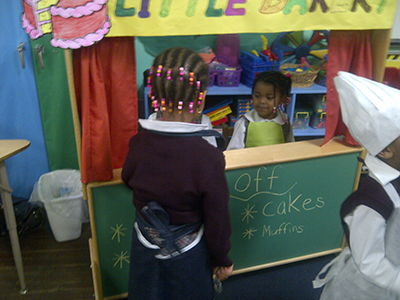Contact Me Today
Phone: 7735177669
Email: lachone@letmetalk2.com
NEW ADDRESS
4455 S King Drive, Suite 100
Chicago IL 60653
Milestones
Hearing/Understanding and Talking Milestones
| Hearing/Understanding | Talking | |
| 0 – 3 Months |
|
|
| 4 – 6 Months |
|
|
| 7 – 12 Months |
|
|
| 1 – 2 Years |
|
|
| 2 – 3 Years |
|
|
| 3 – 4 Years |
|
|
| 4 – 5 Years |
|
|
Oral-Motor, Feeding, and Speech Development Milestones

34 Weeks Gestation to Full Term (40 Weeks Gestation)
- Is developing oral-motor coordination to begin bottle or breast-feeding, including a suck-swallow rhythm
0 – 5 Months
- Takes nutrition primarily through breast milk or formula from a bottle
- Begins to explore rattles and toys orally
- Begins to bring hands to the mouth
- Makes cooing and gurgling sounds during play
- Cries in a manner that is purposeful and communicative
5 – 8 Months
- Begins accepting spoon feeding of semisolid foods, such as stage 1 or 2 jar foods or baby cereals
- Sometimes displays munching pattern with thicker jar foods
- Begins sitting in a high chair
- Produces emerging babbling and sound play
- Holds a bottle and tips it accordingly to receive liquid
- Begins to use cup around 8 Months with an adult holding the cup and tipping slowly
8 – 12 Months
- Begins to eat soft-solid foods and some first finger foods and to produce more noticeable up and down movement of the jaw during chewing
- Picks up and puts to mouth foods such as Cheerios, soft vegetables cut into pieces, and small pieces of toast
- Is becoming adept at closing lips on a spoon to clear the food off
- Holds a spoon (will not necessarily feed himself, but will hold and experiment with his or her own spoon)
- Begins eating cold and warm foods of varying temperatures
- Tolerates massaging of gums
- Produces increased drooling with emergence of teeth
- Continues to mouth objects
12 – 15 Months
- Starts to hold the cup and take a few sips on his own
- May begin drinking from a juice box with a straw
- Blows on a simple and easy instruments or infant blow toys
- Starts to hold the spoon and get it to his or her mouth with lots of mess
- May be able to take a bite of a sandwich when it is held by an adult
- May drool less, even with teeth emerging
- May continue to mouth toys, but becomes more selective
- Is introduced to the concept of toothbrushing
15 Months – 2 Years
- Is pretty independent with mealtime in terms of feeding self, using utensils, and drinking from a cup or straw
- Should be able to request foods or choose foods when given options
- May have favorite foods
- Tolerates foods of all temperatures
- Has vocabulary of at least 50 words and starts to put two words together
- Imitates adult’s words and facial expressions
3 – 5 Years
- Eats independently
- Participates in mealtime routines at home and at school
- Is willing to try new foods on a limited basis
- Is able to blow bubbles and age-appropriate whistles and blow toys
- Produces speech and language that is similar to that of an adult with occasional articulation, grammer, or syntax errors
- Is able to imitate rapid oral-motor movements and up to three-syllable words
- Is able to chew gum when taught in an appropriate manner
- Brushes teeth independently
